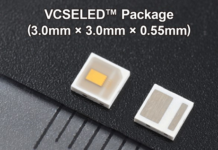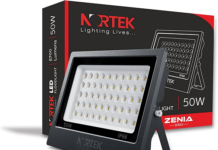
The LED part of QLED, as most of you will know, stands for light-emitting diode – the lighting system used in the vast majority of LED/LCD TVs for years now. The important bit of QLED is the Q, which stands for Quantum Dot.
QLED new TVs QLED because they use quantum dot technology on an LED panel. Quantum dot + LED = QLED. Simple this isn’t actually a new technology, it’s the third-generation of quantum dot in Samsung’s TVs, so you’ll also find it in the 2015 and 2016 SUHD models, although in the new QLED 2017 models, there are a lot of changes.
It’s being pitched as a rival to OLED (organic light emitting diode) at the high-end, with Samsung pushing the message that QLED is a superior technology with a number of advantages over OLED. It’s part of the on-going battle for superiority between LED TV and OLED TV.
The change in name to QLED over SUHD is also a branding and marketing move: not only does QLED as an expression look like OLED, but it resonates better than SUHD, which didn’t really mean anything. It also allows Samsung to separate its flagship Q models, from the second-tier models it offers.
How does QLED work?
Quantum dot TV tech works by placing a layer or film of quantum dots in front of a regular LED backlight panel. The layer is made up of tiny particles each of which emits its own individual colour depending on its size (anywhere between 2 and 10 nanometers). Basically, the size of the particle dictates the wavelength of light that it emits, hence the different colours. Samsung boasts that quantum dots enable over a billion colours.
In this third-generation of quantum dot TVs, called QLED, the particles have been changed, as they now have a new metal alloy core and new metal alloy shell. This enhancement has enabled greater colour accuracy but also enables that colour accuracy at higher peak brightnesses.
This is where things get important for QLED. The ability to produce these colours at higher brightnesses gives a greater colour volume than before and it’s here that QLED claims to surpass the abilities of OLED. It’s able to preserve colours in peak brightness areas that OLED can’t and those peak brightness areas are also higher than OLED can currently achieve.
The result is that QLED gives you a lot more visible colour, it’s better suited for vibrant delivery of HDR content and claims to be able to better give you the visual experience that director intended.
How is QLED different from OLED?
The lighting is really what sets the two technologies apart. Quantum dot TVs still rely on an LED backlight system working in zones, but OLEDs each produce their own light, they’re either on or off. The advantage that OLED offers is that you can turn off the pixels that aren’t needed, giving absolute black areas with no light bleed caused by the need for illumination in some parts of a dimming zone (in theory).
Samsung’s QLED models all use an edge-lit LED system (some are lit from the sides, some bottom) and this is divided into dimming zones. The flagship model, the Q9, has 32 dimming blocks, whereas other Q models have 12 and these are used to control the light. The more dimming blocks the better for delivering different light levels in different areas on the screen.
In previous years you might of heard of a “motheye filter” on Samsung’s TVs. That’s now been replaced by an ultra-low reflectance film and this not only better manages reflections off the panel, but it aids in producing darker blacks, as well as preserving colours at harsher viewing angles. Where the KS8000 (for example) slowly loses saturation when viewed from more extreme angles, the Q9 performs much better.
These QLED changes also help fend off OLED’s benefits: the detailed lighting control and this new film is designed to help create those deeper blacks, as well as preserve colour saturation. While OLED screens can effectively produce better blacks, quantum dot TVs can still go much brighter, and when you throw High Dynamic Range (HDR)into the mix, brightness is key. New OLED TVs in 2017 are brighter than 2016, but still some way off LED.
The other main difference between the two is price. OLED screens are still considered to be expensive compared to their LED counterparts. That’s because OLED screens are still relatively difficult to produce, although yield rates are much better than they were when the technology first emerged.
Samsung hasn’t released pricing details of its new QLED sets just yet, but they’re likely to undercut them because they’re much more cost-effective to produce.


















